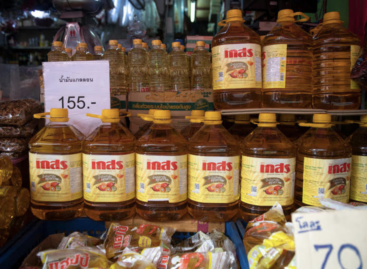Nestlé remains the world’s most valuable food brand, according to Brand Finance
Nestlé has led the global ranking of food brands for the seventh year in a row, despite the fact that its value decreased by 7 percent over the past year, to 20.8 billion dollars, according to the website of the British market research and business consulting company Brand Finance.

The Lay’s brand rose to second place in the ranking from third place last year, after its brand value rose by 9 percent to $12 billion. In third place was the Chinese brand Yili, whose value fell by 6 percent to 11.6 billion dollars.
With a brand value of $8.27 billion (-5.2 percent), the American Tyson rose to fourth place from fifth place, ahead of the French Danone, whose value decreased by 10.2 percent to $8.03 billion. American Quaker (+6.5 percent, $7.5 billion) and Kellogg’s (-16.3 percent, $6.1 billion), which took sixth and seventh place in the ranking this year, respectively, switched places from last year compared to
The Mars Wrigley brand rose from tenth to eighth (+7.5 percent, $6 billion), China’s Mengniu remained in ninth place (-11.1 percent, $5.4 billion), and the American brand Doritos was tenth rose from thirteenth place last year (+12 percent, to $4.6 billion).
Related news
Carlos Alcaraz Joins Danone as Global Ambassador
Convinced that combining a good diet and sports habits from…
Read more >Nestlé cuts jobs at Czech factory amid falling demand for plant-based meat
Nestlé is to cut 80 jobs from its Krupka plant…
Read more >Danone buys Belgian biotics firm The Akkermansia Company
In a statement, the owner of yogurt brand Activia said…
Read more >Related news
Corporate leaders’ commitment to sustainability at record level
According to the latest data from the K&H Sustainability Index,…
Read more >FAO food price index rose slightly in June due to higher prices of meat, dairy products and vegetable oils
The Food and Agriculture Organization of the United Nations (FAO)…
Read more >What can cause the price of a wine to increase tenfold?
There are fewer of them worldwide than the number of…
Read more >






